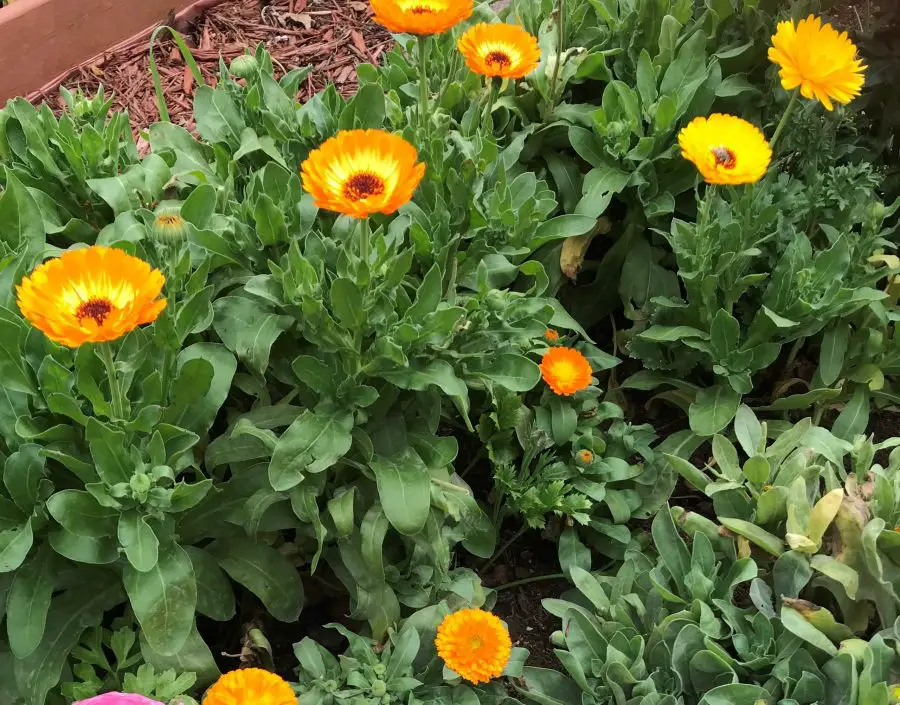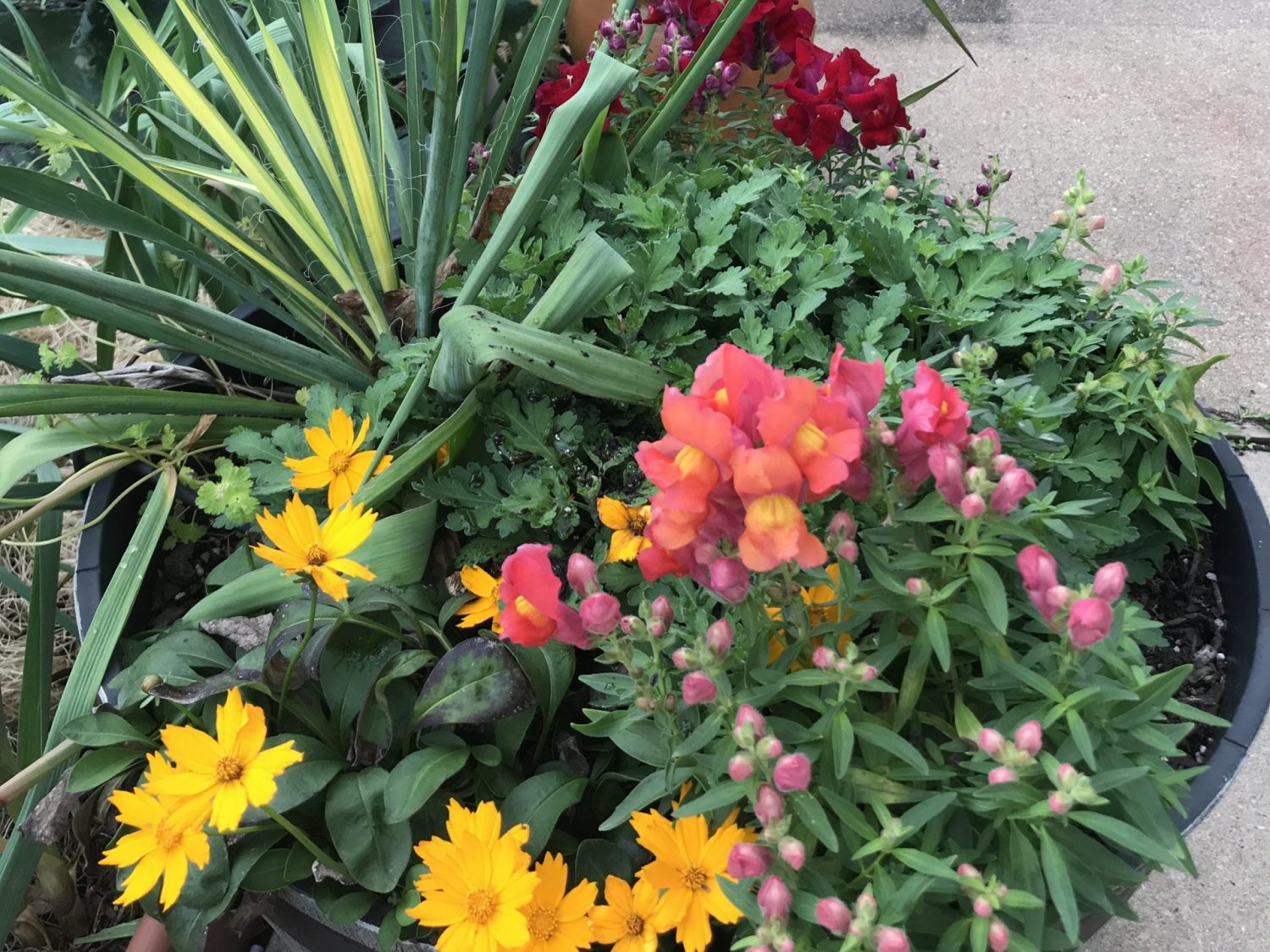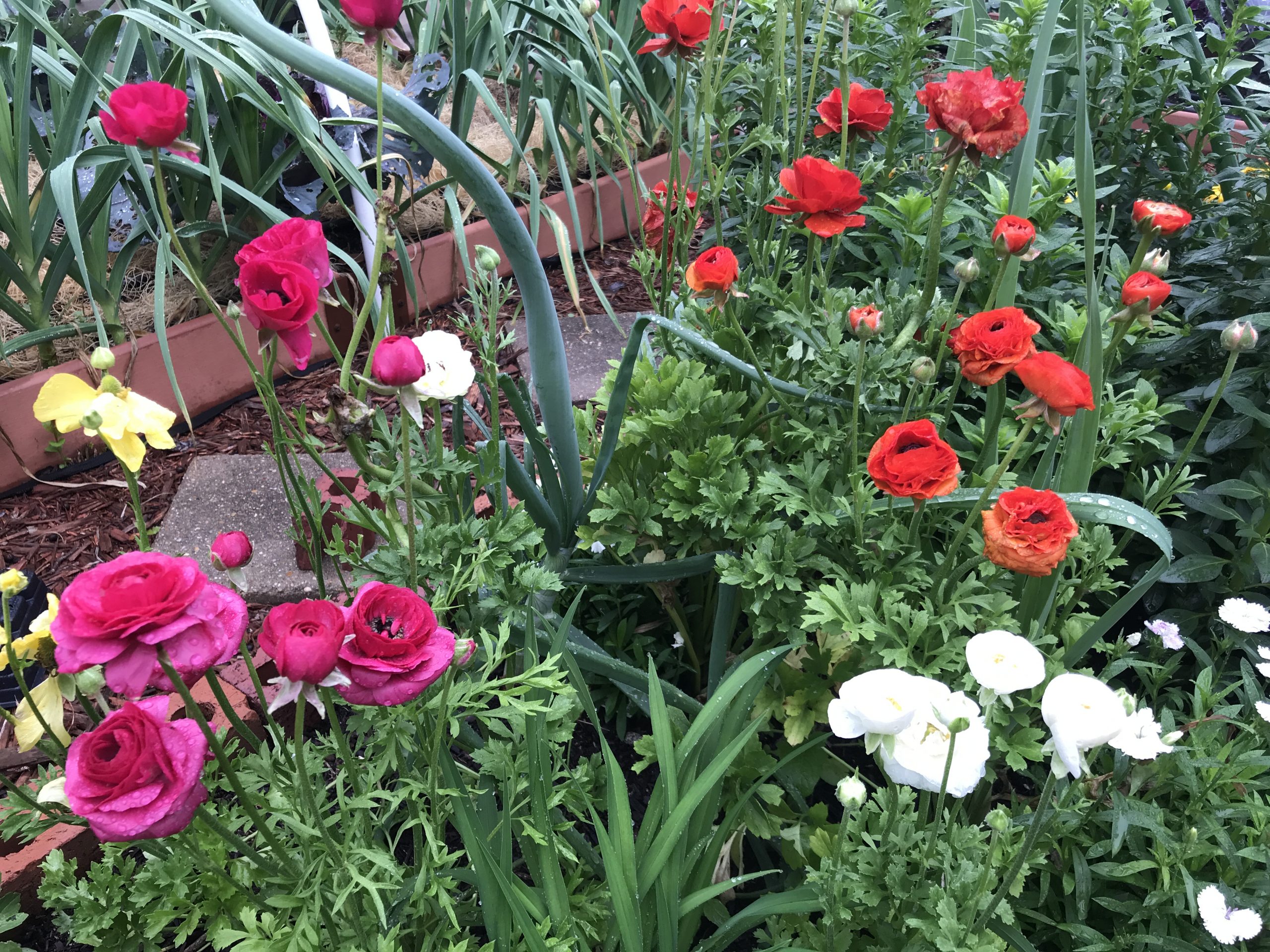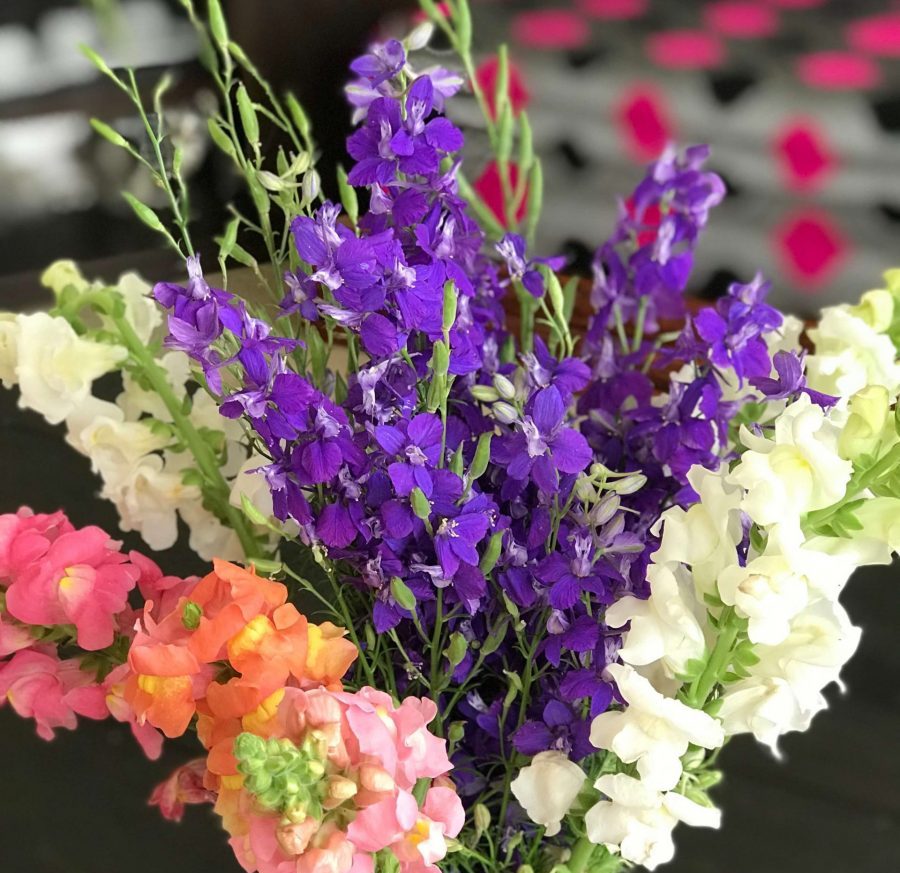Calendula flower is a beautiful cool-season flower. It is also called pot marigold for its being edible. It is a hardy annual with Mediterranean origins. The most common variety is the Calendula Officinalis. Here is how to grow calendula from seed to harvest in Central Texas and any warm regions.
When to grow calendula in Warm Regions?
Regions with mild winters can grow calendula from fall through early summer. Calendula thrives in cooler weather and tends to succumb to powdery mildew in the humid summers.
Is calendula perennial or annual?
Most people treat calendula as an annual plant. However, calendula can survive in mild-winter climates and be a perennial if provided shade during the hot summer. Keep in mind that calendula is a self-seeder.
Direct sow vs. seed start calendula seeds?
Calendula transplants are abundant in nurseries, but starting the seeds indoors gives you a head start on the season. By the way, calendula seeds are unique-looking. They have different shapes, but mainly they look like little horns.
Starting calendula seeds is very easy, despite its low germination rate. The best time to start them is around September, six to eight weeks before your first frost date.
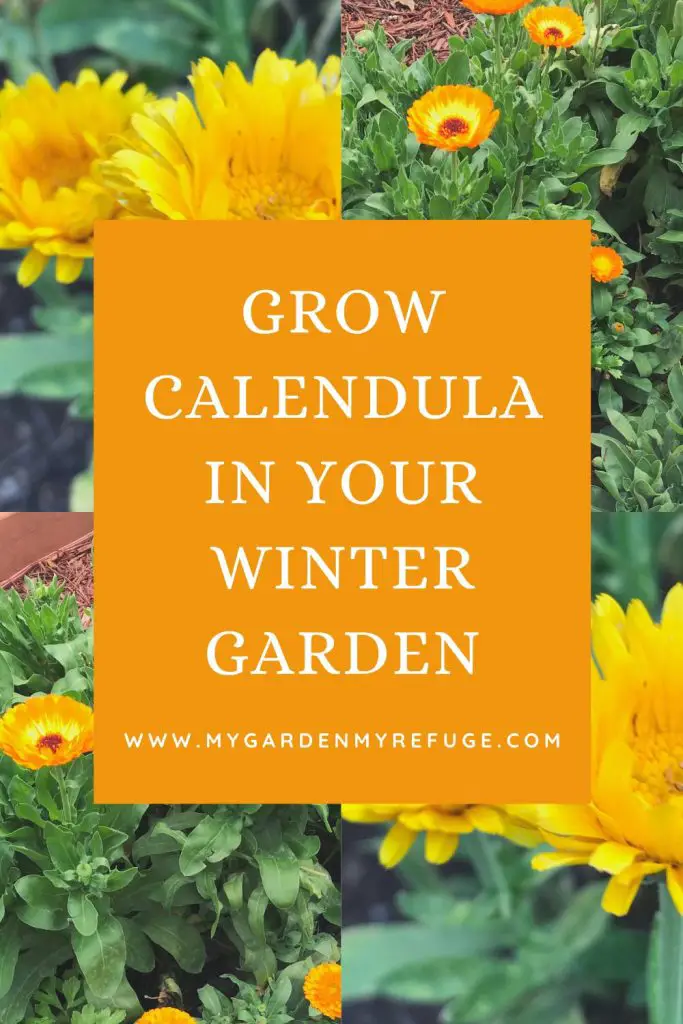
How to start calendula seeds?
It is best to start calendula seeds in three-inch containers rather than the seed starting cell to prevent unnecessary transplanting steps to bigger pots later, which may disturb the root ball.
- Fill clean containers with pre-moistened seed-starting mix,
- Pack the soil in slightly to get all air pockets out.
- Put two to three seeds per container.
- Cover the seeds with soil and pat them gently.
- Water.
- Don’t forget to label.
- Put under grow light or on a window sill.
How long does it take for calendula to germinate?
If the soil is moist at all times, not dripping wet, the seeds should germinate within a week. Keep the light on all day for the seedlings to prevent the stretching of their stem.
When to pot up the calendula seedlings?
Calendula is a tough plant and can survive in its pot as long as it gets an adequate water supply. Therefore, it is best to start the seeds in a four-inch container rather than seed cells.
If the plants risk becoming root-bound and the weather does not permit outdoor planting yet, it is best to pot them up with care. Try to keep the root ball as intact as possible.
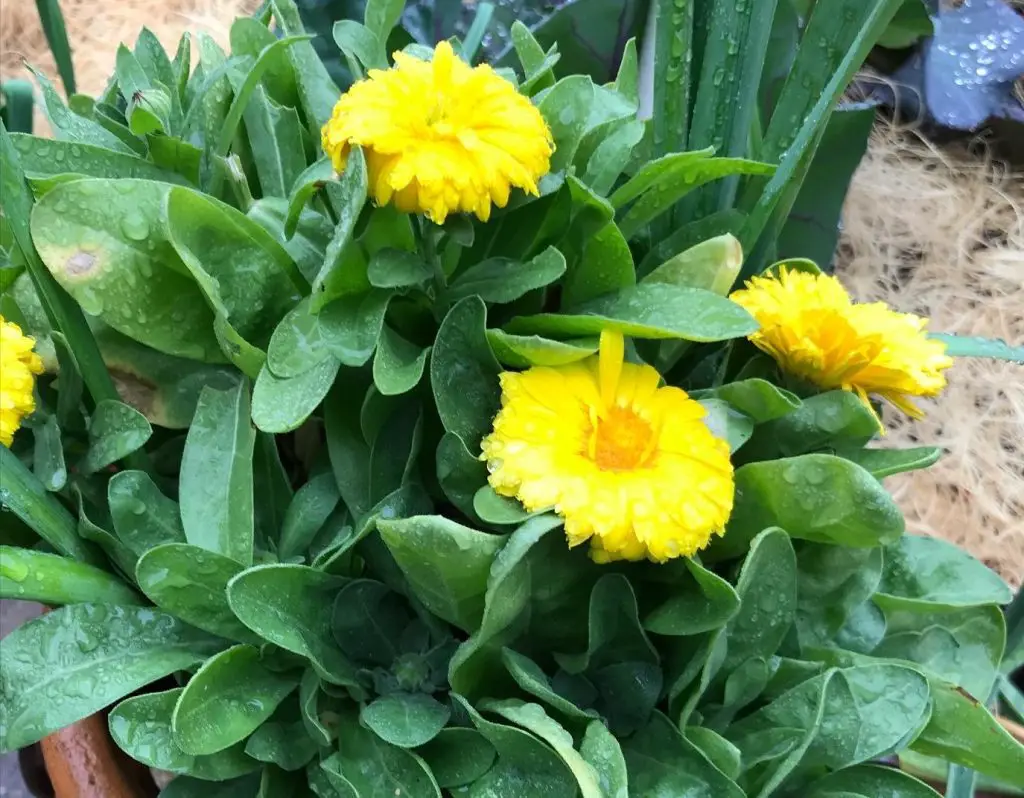
When to plant calendula out?
Calendula flower does not like hot weather. However, summer may linger till October in mild-winter regions, so plant calendula as soon the weather cools down, with 75F (25C) day temperatures and 65F (16C) at night.
Protect your newly planted seedlings from the harsh sun using shade cloth. Direct sunlight may burn the plants and eventually kill them.
How to plant calendula transplants?
- Choose a sunny spot with well-draining soil. Then, add compost to clay soil to improve drainage and to sandy soil to increase water retention.
- Dig a hole as big as the root ball.
- You may add a slow-release fertilizer to the planting hole at this point.
- Hold the plant upside down in the palm of your hand and squeeze the bottom of the pot gently to release the root ball.
- Flip back the plant and place the root ball in the hole at the soil level.
- Backfill with soil and pat gently to eliminate air pockets.
- Water thoroughly.
Does the calendula need fertilizing?
Calendula is an easy-going plant that does not demand much attention as long as the growing site is suitable. Adding compost or slow-release fertilizer is plenty for calendula to thrive and bloom.
Frequent deadheading and removing yellow or old leaves will keep your plant happy.
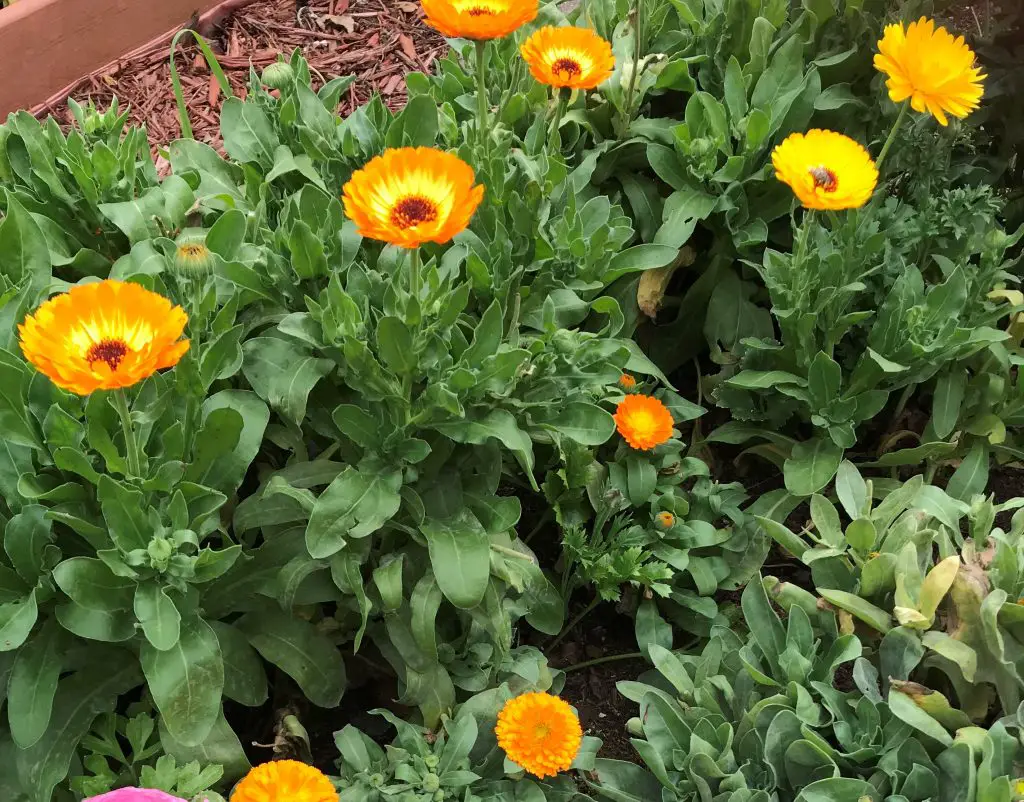
How to water calendula plants?
Water calendula plant regularly after planting and avoid allowing the soil to dry between each watering. Then, once new growth appears, the plant can handle short dry periods.
Growing calendula in pots
Calendula is a great container flower. You can plant it in its pot or add it to an arrangement as a filler. few pointers to be successful in growing calendula in pots:
- Use well-draining soil.
- Fertilize occasionally to replenish the soil.
- Containers dry out fast, so keep a good watering regimen.
- Calendula plant reaches 24 inches wide tall, so keep the container size in mind.

calendula pest and disease problems
During the growing season, some problems may appear in the calendula plant.
1- Powdery Mildew
Powdery mildew is a fungal disease that thrives in warm and humid conditions. It manifests in the form of white powdery blotches on the leaves. Unfortunately, nothing can prevent it, but you can delay its spread by applying a fungicide.
If the plant is severely infected, better discard it.
2- Aphids
Aphids are the most common and most annoying pest in the home garden. They show up in spring. The best defense against them is encouraging the population of ladybugs, their number one predator.
Another way to treat aphids is by using a strong jet of water to wash them off the plant twice to three times a week until they disappear.
3- Geometridae larvae
The Geometridae larva is a small yellowish worm with geometrical shapes on its back. It is the larvae of a nocturnal moth and feeds off the flower’s center. If detected soon enough, manual removal is the solution. Otherwise, use BT caterpillar killer in case of an infestation.
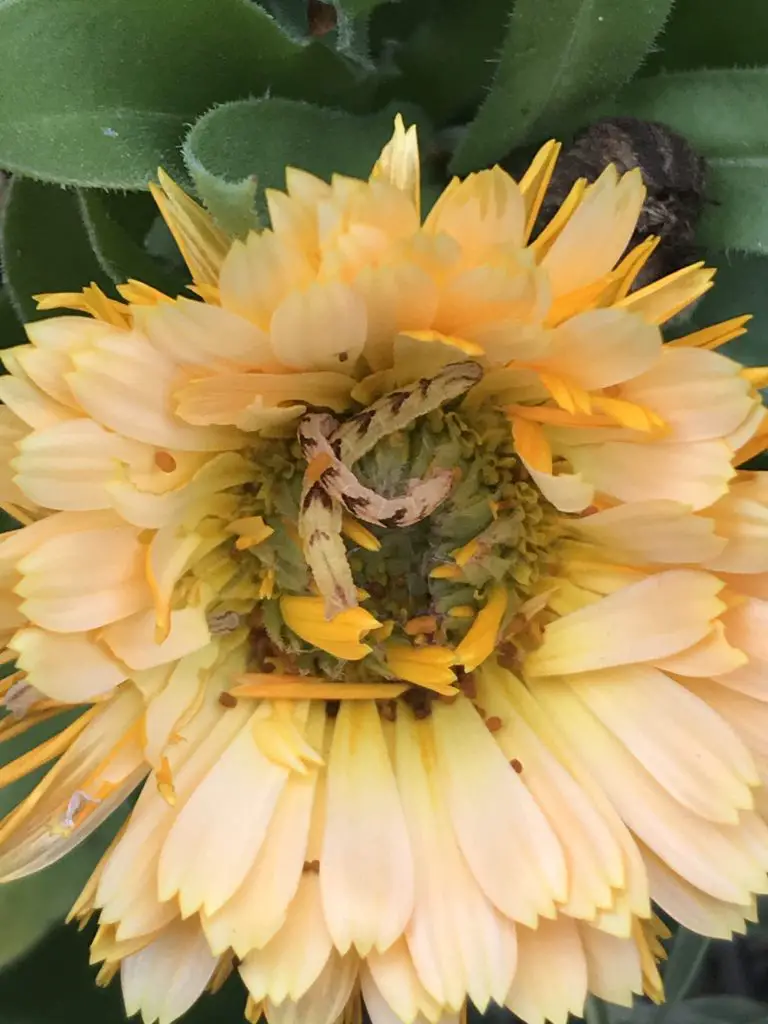
Calendula flower
The brightly-colored flower is attractive and brightens up the winter garden. It has a daisy-like shape with layered petals in buttery yellow, orange, or coppery pink.
Calendula is an edible flower, hence its other name, “Pot Marigold.” The yellow petals are a suitable replacement for saffron, hence its nickname “Poor man’s saffron.”
Calendula blooms during the cool season from October to May. Keep deadheading to encourage more flowers and cut back the plant lightly at the end of winter to promote bushier growth.
How to harvest calendula petals?
People harvest calendula for its medicinal properties, mainly to treat dry skin.
Pick the flowers when fully open but before they start wilting. Inspect for insects before laying them flat to air dry, then store them in an air-tight glass jar.
How to harvest calendula seeds?
To collect calendula seeds, allow the flower to die and dry out completely. The petals will fall off, leaving the head full of weird-looking seeds.
Always make sure the seeds are dehydrated before storing them. Any moisture may cause them to rot. Then store them in a paper seed bag or a glass jar, and keep them in a dry place.
Calendula seeds are viable for only one year. Therefore, it is crucial to mark the seeds with the date of harvest.
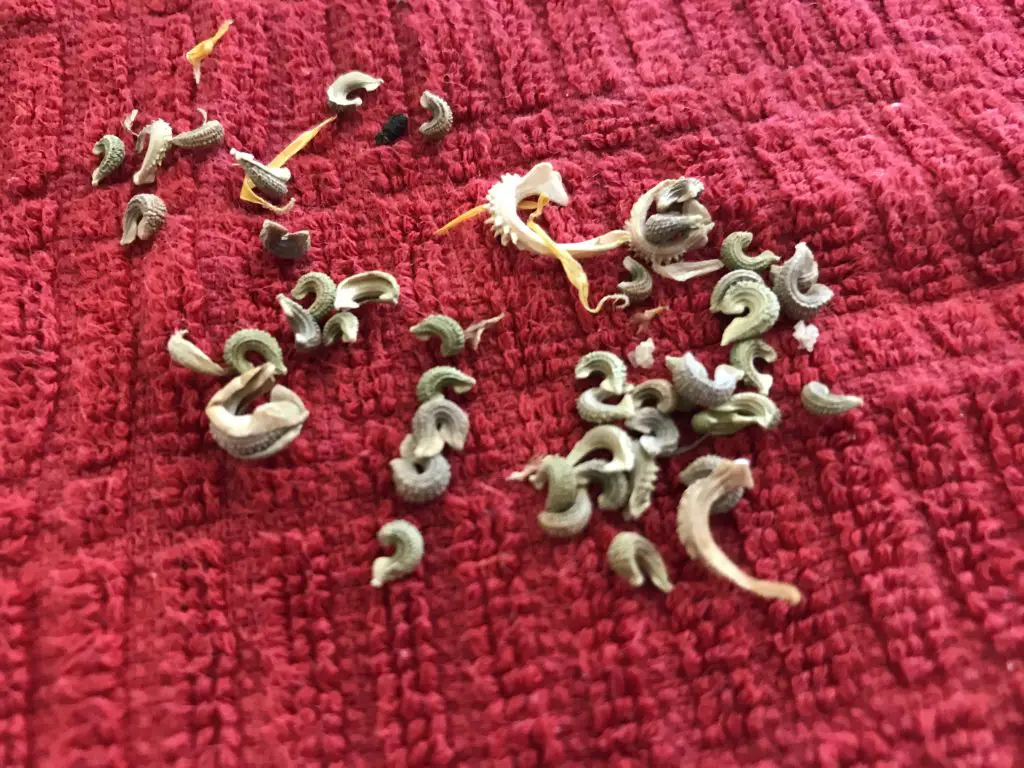
Calendula flower uses
The information provided below is for information purposes. Please, use your due diligence before consuming anything.
- You can use calendula in tea to calm an upset stomach or soothe a sore throat. To make the tea, steep two tablespoons of calendula, fresh or dried, in a cup of boiling water for fifteen minutes.
- Add color to your rice or soup with calendula petals.
- Make calendula-infused oil to use on dry skin and eczema. Fill a glass jar halfway through with calendula petals, fill it up with clear, mild oil such as almond or coconut oil, close it tight, and keep it in the dark for four weeks. After that strain, use the infused oil for the skin or use it in homemade skin creams.
Click here to learn more about calendula uses.
How to make calendula-infused oil?
There are many uses for calendula-infused oil. For example, you may use it directly on dry skin to hydrate it and soothe it or make a skin moisturizing cream.
Choose a mild oil to infuse your calendula flowers, such as almond oil or grapeseed oil. There are two ways to infuse the oil.
- Fill a glass jar halfway through with petals, pour the oil over it till full, then shut it close and store it in a dark place for four weeks. After that, strain before use.
- Put oil in a glass bowl and add the petals, one teaspoon per cup. Then place on a double boiler, and allow to infuse gently for twenty minutes. Avoid boiling the oil. Store in an air-tight jar in a dark place.
